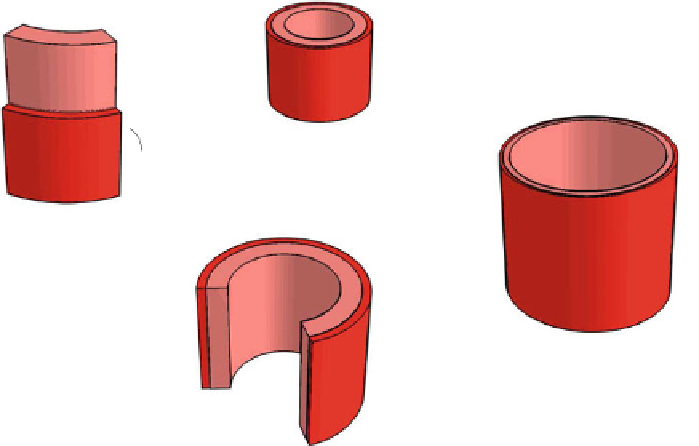Biomedical Engineering Reference
In-Depth Information
(a)
(c)
(d)
(b)
Fig. 1
Deformation modes of a double-layered thick-walled cylindrical tube, cf. Holzapfel
et al. [
6
]: bending (opening angle
ʱ
), inflation (internal pressure
p
), and extension (axial stretch
ʻ
z
);
a
segment of the arterial wall consisting of media (M) and adventitia (A) reinforced by two families
of fibres with fibre angles
A
defined in
b
a stress-free reference configuration
B
0
;
c
residually
stressed but load-free configuration
B
res
;
d
residually stressed and loaded current configuration
B
t
.
(Adopted from Waffenschmidt and Menzel [
15
] with kind permission of Elsevier.)
M
,
ʲ
ʲ
conveniently be used to model residual stresses within finite element formulations
for the simulation of tube-like boundary value problems; see Sect.
6.1
.
6 Numerical Examples
In order to highlight the mechanical modelling capabilities as well as the compu-
tational performance of the presented model, we discuss some illustrative three-
dimensional finite element examples. To be specific, we study the degradation of a
fibre-reinforced artery-like tube subjected to internal pressure. As a crucial aspect
of this contribution, residual stresses are incorporated by means of the technique
described in Sect.
5
.
6.1 Reproduction of the Opening Angle Experiment
Residual circumferential stresses can be revealed by the
opening angle experiment
,
where a short ring of an artery is cut in radial direction. The residual stresses through




















































































































